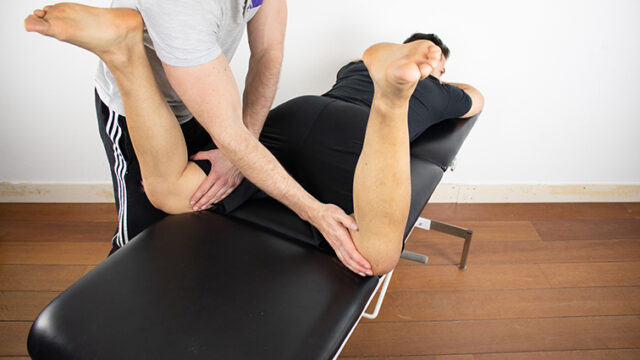Learn
Phelps Test | Length Testing
The Phelps test is a muscle length test that assesses the length of the gracilis muscle and can indicate gracilis contractures or shortening of the muscle.
The gracilis is the only muscle of the adductor group that is biarticular, meaning that it crosses the hip and knee. This anatomical feature is used in the Phelps test.
To conduct the test, have your patient in prone lying position with extended knees. Then abduct your patient’s legs passively as far as possible. Now ask your patient to flex his knees to 90° and try to abduct the hips further passively.
This test is considered positive for contractures in the gracilis muscle if abduction is increased after 90° of knee flexion. This is due to the fact, that knee flexion shortens the gracilis and enables more abduction if this muscle is the limiting factor.
- Ober’s Test
- Ely’s Test
- Kendall Test
- 90-90 Straight Leg Raise Test
- Backsaver Sit and Reach Test
- Tripod Sign
- Thomas Test (Iliopsoas Length Testing)
21 OF THE MOST USEFUL ORTHOPAEDIC TESTS IN CLINICAL PRACTICE

Like what you’re learning?
BUY THE FULL PHYSIOTUTORS ASSESSMENT BOOK
- 600+ Pages e-Book
- Interactive Content (Direct Video Demonstration, PubMed articles)
- Statistical Values for all Special Tests from the latest research
- Available in 🇬🇧 🇩🇪 🇫🇷 🇪🇸 🇮🇹 🇵🇹 🇹🇷
- And much more!








